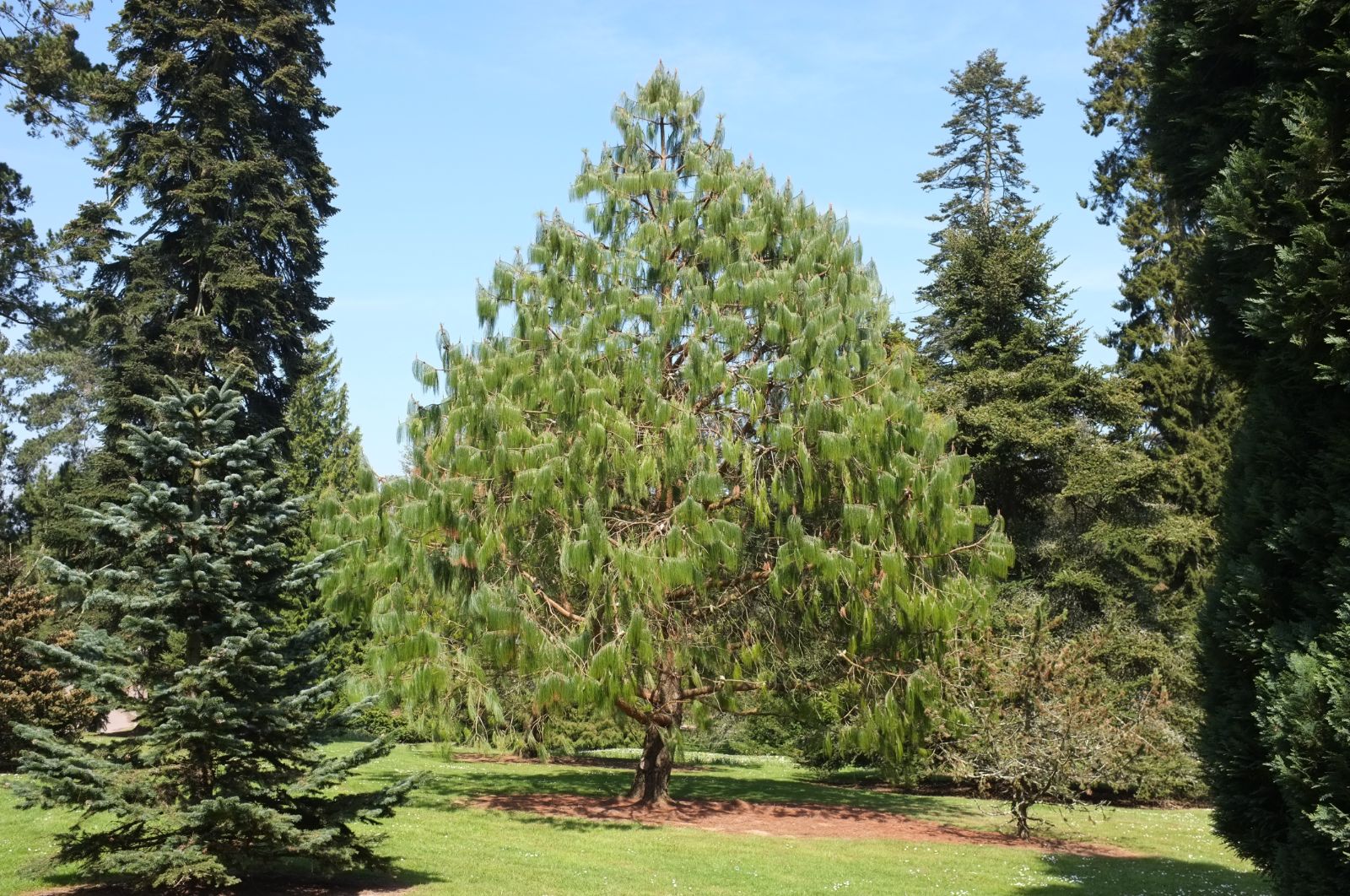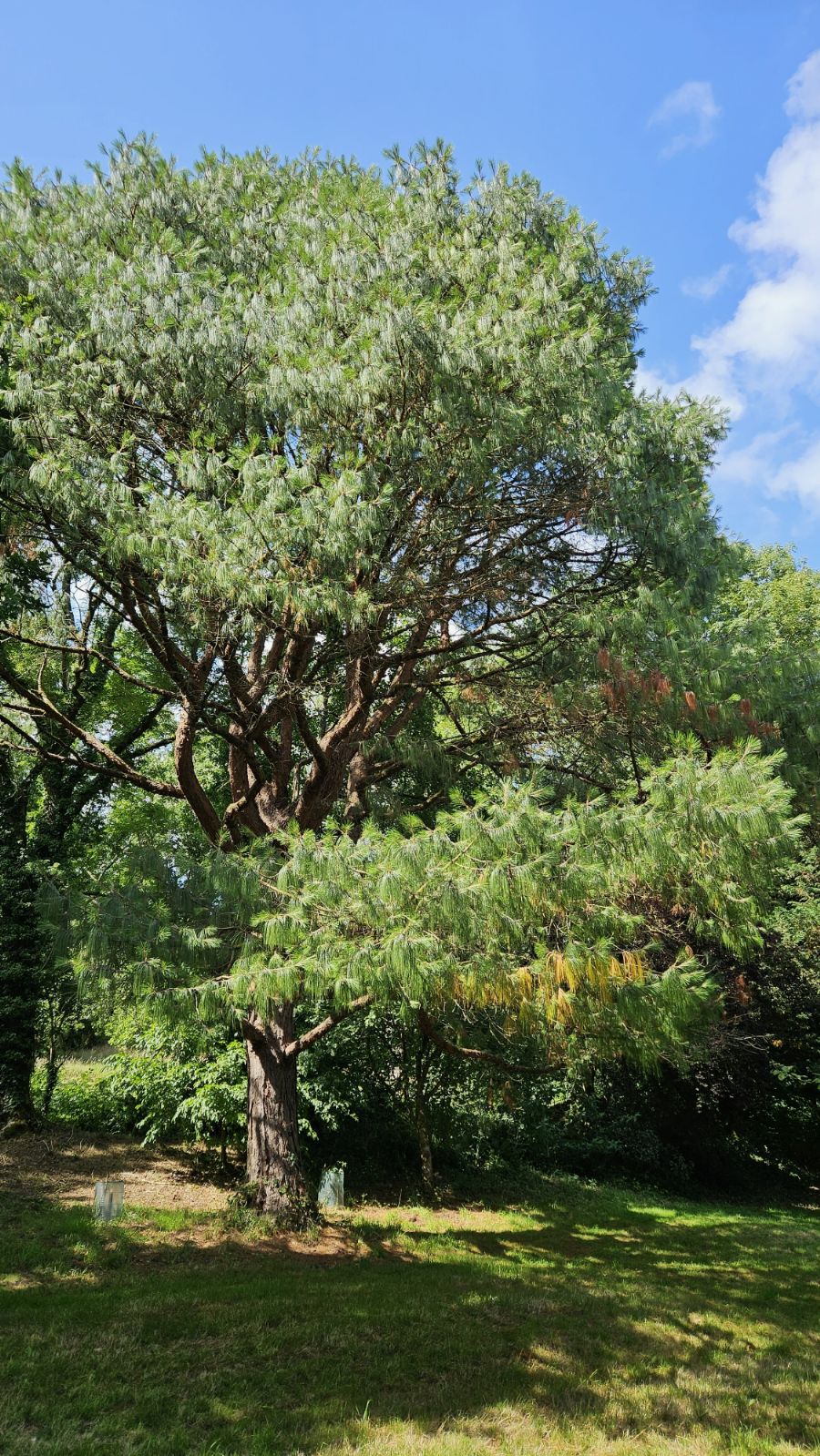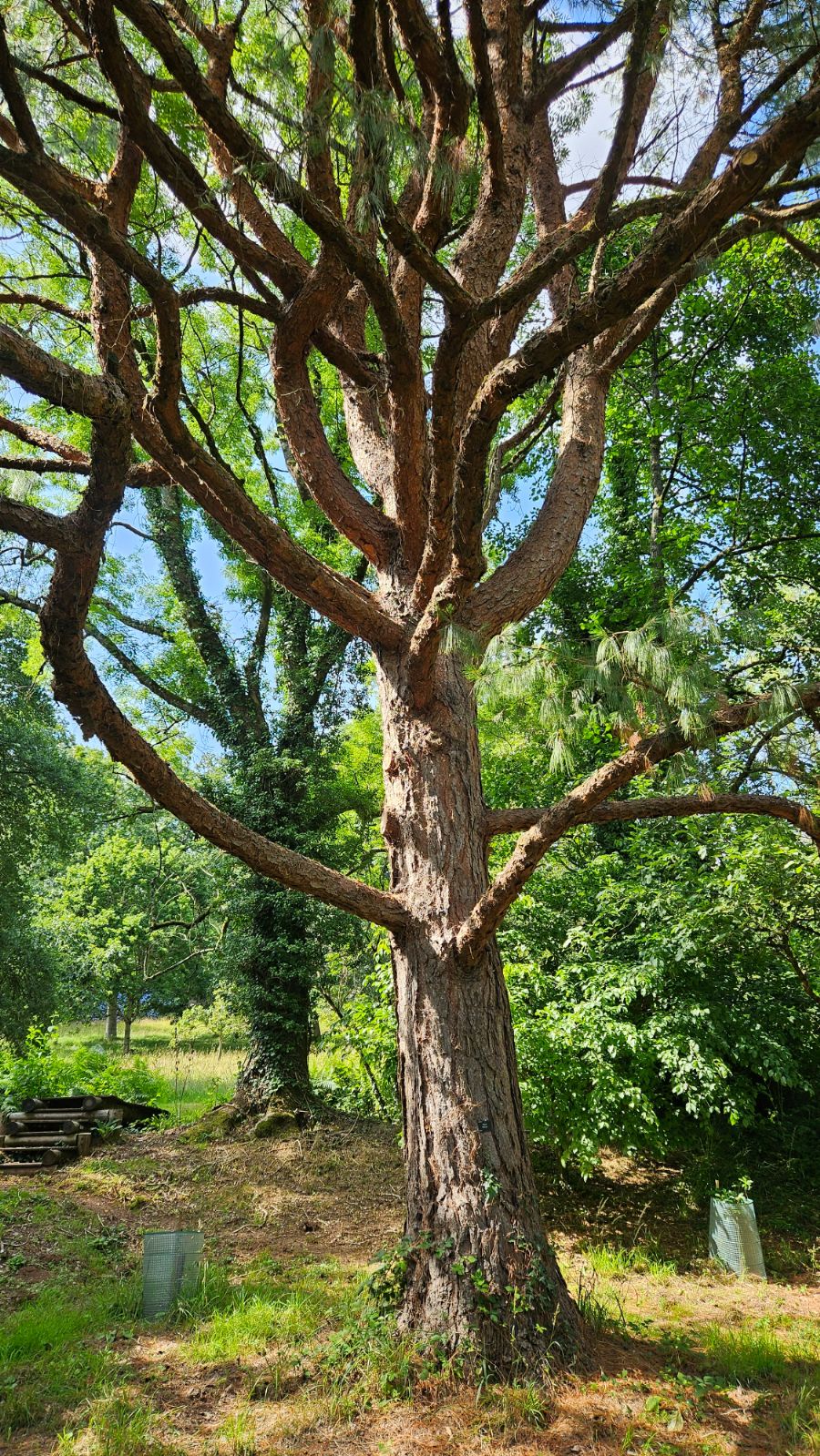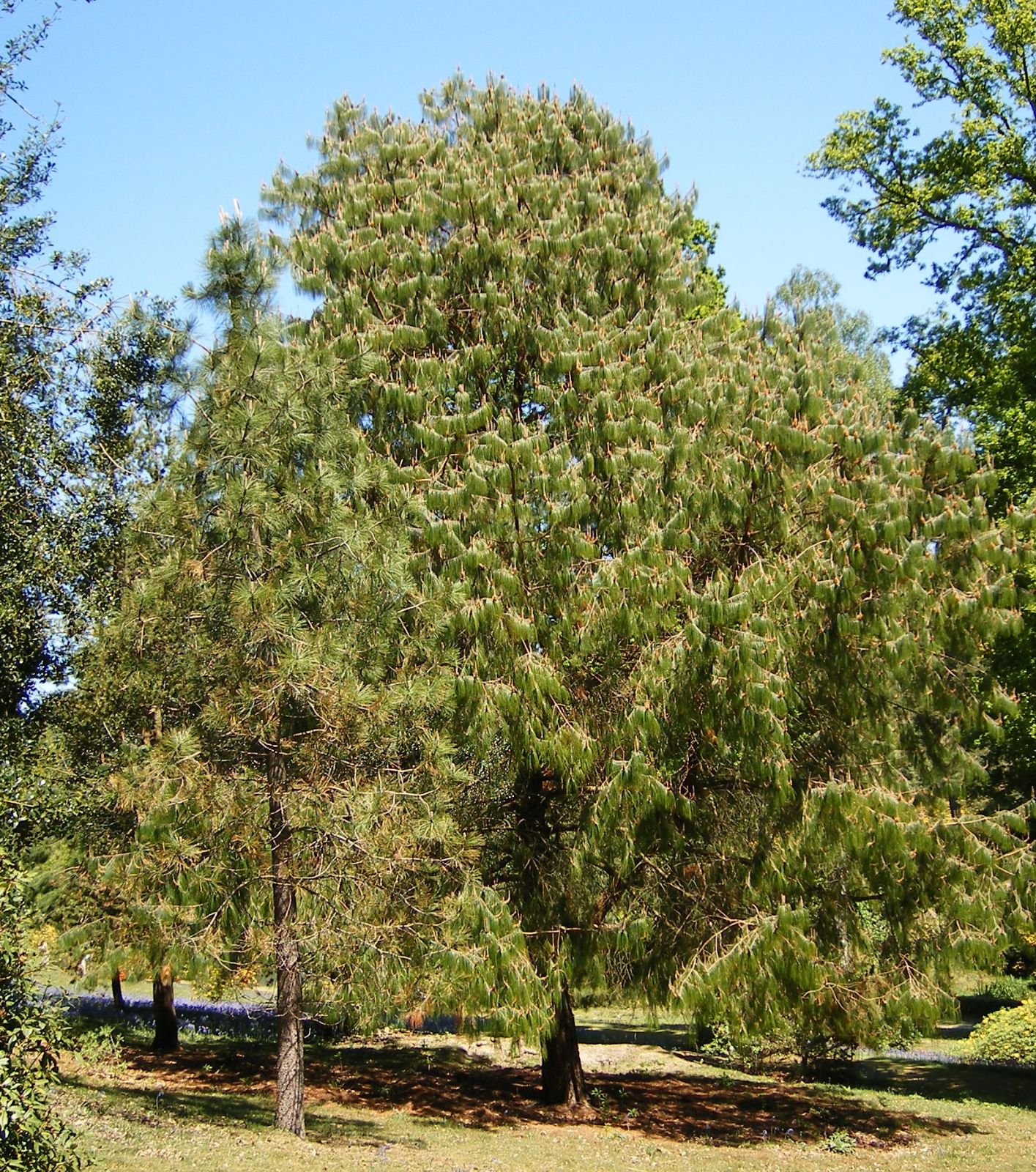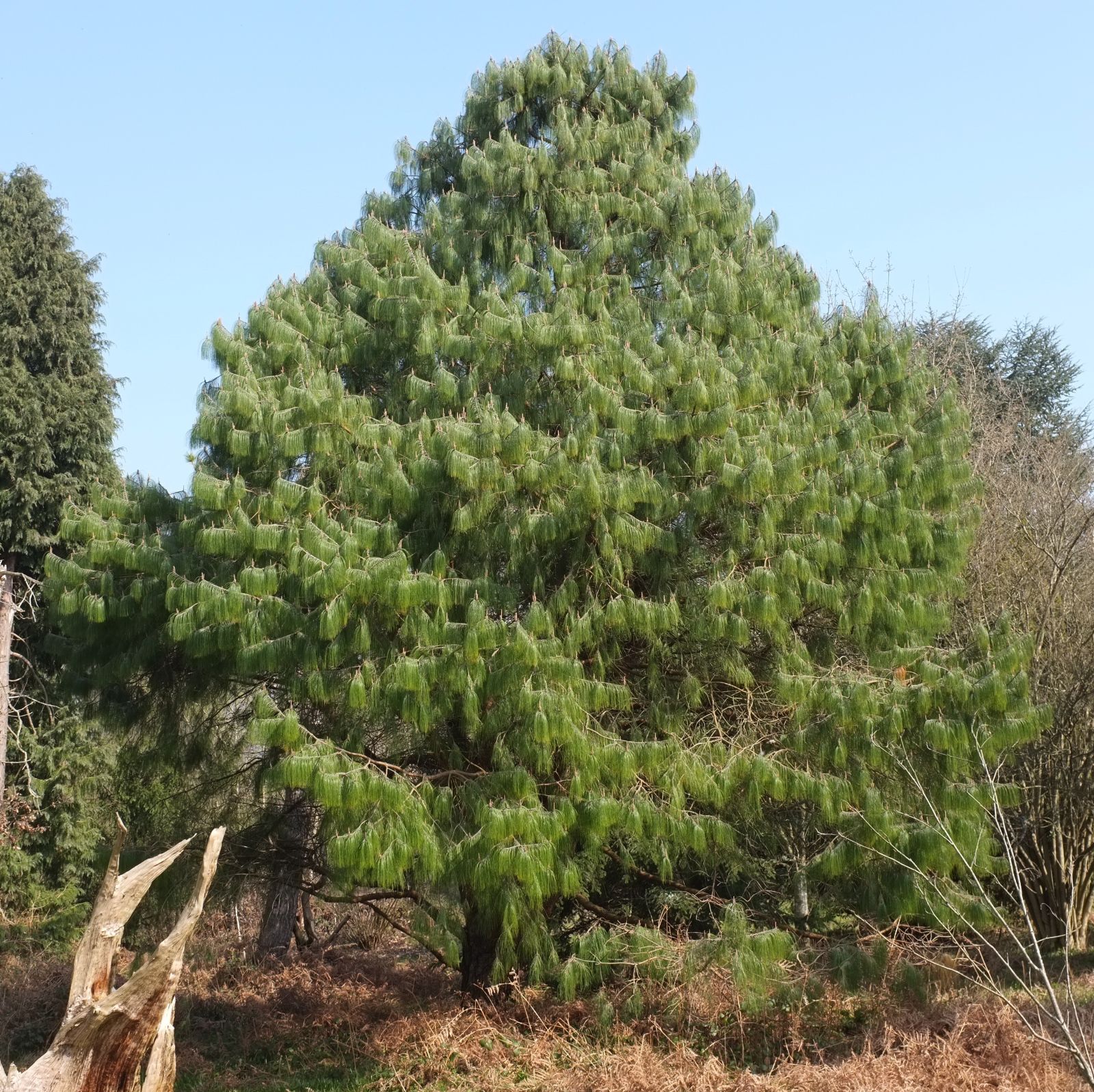Pinus patula
Credits
Article from Bean's Trees and Shrubs Hardy in the British Isles
Recommended citation
'Pinus patula' from the website Trees and Shrubs Online (treesandshrubsonline.
Genus
Other taxa in genus
- Pinus albicaulis
- Pinus arizonica
- Pinus armandii
- Pinus attenuata
- Pinus ayacahuite
- Pinus balfouriana
- Pinus banksiana
- Pinus bhutanica
- Pinus brutia
- Pinus bungeana
- Pinus canariensis
- Pinus cembra
- Pinus cembroides
- Pinus chiapensis
- Pinus contorta
- Pinus coulteri
- Pinus culminicola
- Pinus densata
- Pinus densiflora
- Pinus devoniana
- Pinus durangensis
- Pinus echinata
- Pinus edulis
- Pinus elliottii
- Pinus engelmannii
- Pinus eremitana
- Pinus flexilis
- Pinus gerardiana
- Pinus greggii
- Pinus × hakkodensis
- Pinus halepensis
- Pinus hartwegii
- Pinus heldreichii
- Pinus henryi
- Pinus × holfordiana
- Pinus hwangshanensis
- Pinus jeffreyi
- Pinus johannis
- Pinus koraiensis
- Pinus lambertiana
- Pinus leiophylla
- Pinus longaeva
- Pinus massoniana
- Pinus maximartinezii
- Pinus monophylla
- Pinus montezumae
- Pinus monticola
- Pinus morrisonicola
- Pinus mugo
- Pinus muricata
- Pinus nelsonii
- Pinus nigra
- Pinus oocarpa
- Pinus orizabensis
- Pinus palustris
- Pinus parviflora
- Pinus peuce
- Pinus pinaster
- Pinus pinceana
- Pinus pinea
- Pinus ponderosa
- Pinus pseudostrobus
- Pinus pumila
- Pinus pungens
- Pinus quadrifolia
- Pinus radiata
- Pinus remota
- Pinus resinosa
- Pinus rigida
- Pinus roxburghii
- Pinus sabiniana
- Pinus serotina
- Pinus sibirica
- Pinus strobiformis
- Pinus strobus
- Pinus sylvestris
- Pinus tabuliformis
- Pinus taeda
- Pinus taiwanensis
- Pinus teocote
- Pinus thunbergii
- Pinus torreyana
- Pinus virginiana
- Pinus wallichiana
- Pinus wangii
- Pinus yunnanensis
A tree ordinarily 40 to 50 ft, sometimes 80 ft high, often branching low and acquiring a spreading round-topped shape when old; old bark rough, with a distinct reddish tinge. Young shoots glabrous, rather glaucous at first, becoming scaly and reddish brown. Winter-buds not resinous, 1⁄2 to 3⁄4 in. long, cylindrical, covered with awl-shaped, pointed, fringed, brown scales which are free except at the base and slightly spreading. Leaves pendulous, normally in threes (occasionally in four or fives), 6 to 9 in. long, very slender, and very minutely toothed on the margins, persisting two to four years; basal sheath persistent, about 1 in. long. Cones shortly stalked, often in clusters of two to five, 21⁄2 to 4 in. long, 11⁄4 to 11⁄2 in. wide at the base; tapering upwards, curved, unequally sided at the base, pale shining brown.
Native of Mexico; discovered in 1828 and introduced then or soon after, as a plant 6 ft high is recorded by Loudon to have been growing in the garden of A. B. Lambert in 1837. It must be accounted one of the rather tender pines, and it is found at its best in Cornwall and similar places. This pine is unmistakable in its very slender, drooping leaves in bundles of threes with a persistent leaf-sheath. Very attractive and distinct for mild districts, it may also be tried in cooler places.
P. patula is uncommon in southern England, but there is a specimen in the Pinetum at Wakehurst Place, Sussex, planted around 1918, which measures 46 × 31⁄2 + 3 ft (1971). A small tree, about twenty years planted, is growing well in the nursery of Messrs Hillier at Jermyns House, Romsey. But most of the recorded trees are in the south-west and in Ireland. The most notable of these are: Tregothnan, Cornwall, 57 × 71⁄2 ft (1971); Tregrehan, Cornwall, 52 × 51⁄2 ft (1971); Fota, Co. Cork, Eire, 54 × 61⁄2 ft (1966); Powerscourt, Co. Wicklow, Eire, 54 × 51⁄4 ft (1966); Shelton Abbey, in the same county, 52 × 51⁄4 ft (1966).
From the Supplement (Vol. V)
specimens: Wakehurst Place. Sussex, 46 × 41⁄4 + 31⁄4 ft (1979); Hillier Arboretum, Ampfield, Hants, 36 × 41⁄4 ft (1984); Tregrehan, Cornwall, 70 × 61⁄2 ft (1979); Cockington Court, Torbay, Devon, 44 × 43⁄4 ft (1984); Powerscourt, Co. Wicklow, Eire, 36 × 51⁄4 ft (1980).

